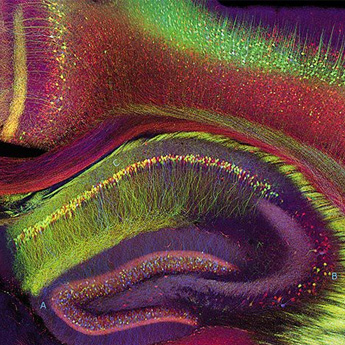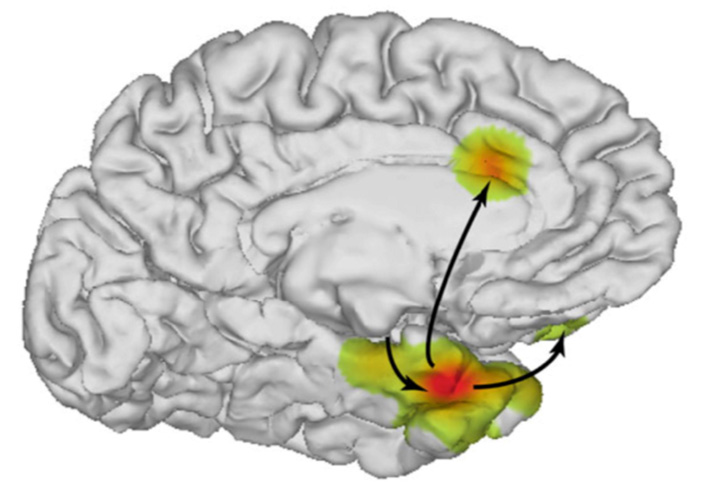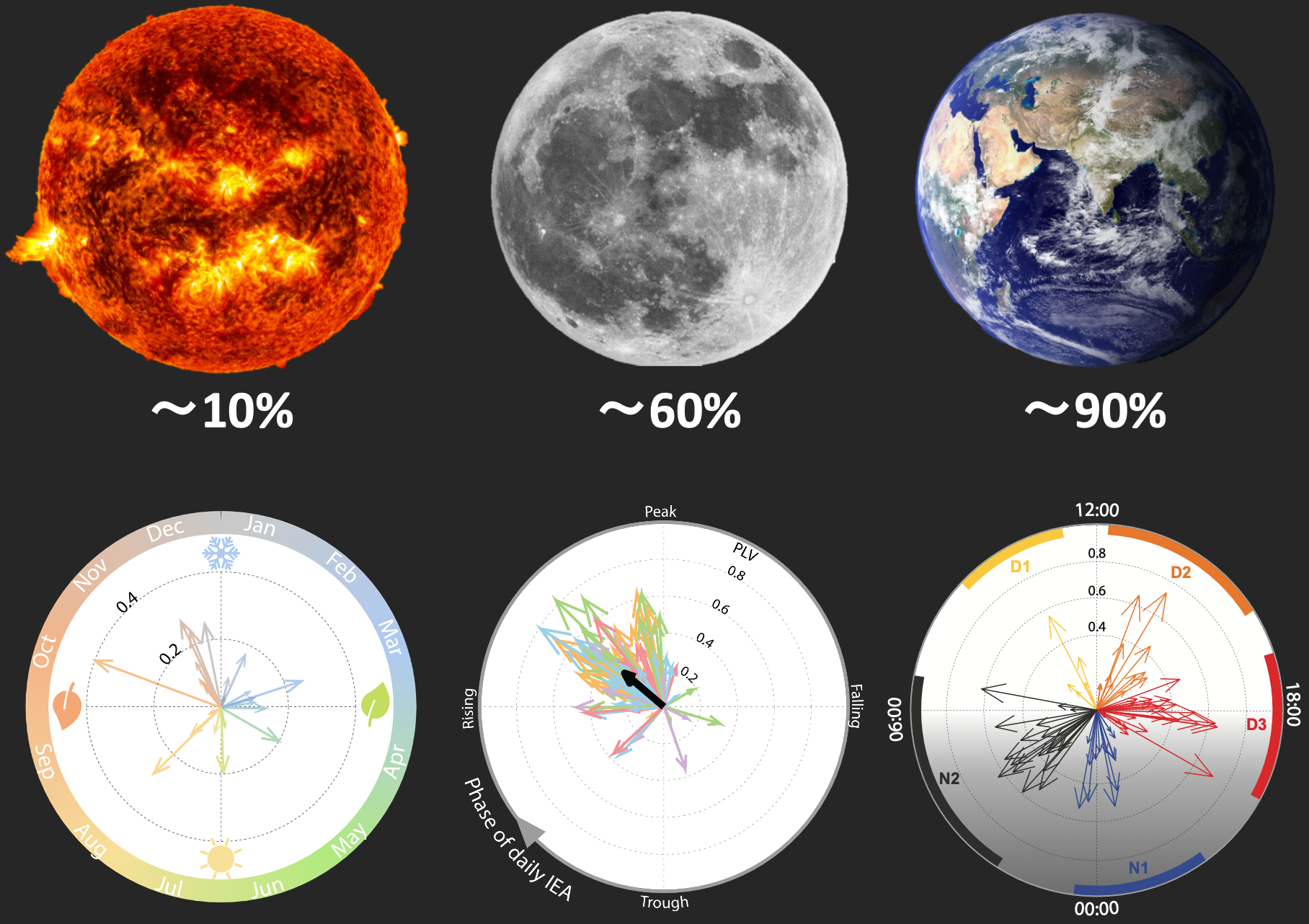Research at the e-Lab
Past and ongoing research at the e-Lab includes experimental neuroscience in animals, clinical neuroscience and clinical trials of new devices for monitoring and neuromodulation of brain activity.
Seizure Networks
Sometimes the clinical exploration of epilepsy necessitates localizing seizures with direct brain recordings, called i-EEG. In partnership with the Sleep-Wake-Epilepsy Center at Inselspital, we analyze these recordings to better understand seizure networks. We rely on advanced signal processing and cutting-edge machine-learning approaches to accelerate our understanding of complex signals.
Signaling Dynamics within the Human Brain
Amid an intricate tangle of nerve fibers, how can one discern the orderly directed signals that underpin communication within the human brain? We developed novel methods to map actual signal transmission across brain regions with millimeter and millisecond precision. We rely on probing electrical stimulations delivered intracortically and find evidence for signal transmission from cortical response in any other nearby or distant brain region. Our approach offers the fundamental advantage of causality and an alternative to passive brain recordings with fMRI or EEG which cannot measure directionality with certainty. We believe that the directness of our methods bring us one step closer to the holy grail of the human connectome.
Seizure Cycles
Starting in 2017, we made significant contributions to characterizing ‘seizure cycles’, the fact that epileptic seizures tend to recur with a certain periodicity in people with epilepsy. Using years-long EEG recordings from over 200 patients implanted with an intracranial EEG device, we found that seizures occur at preferential times (a circadian modulation) and with quasi-periodic seizure-free intervals, a phenomenon for which we coined the term ‘multidien cycles’ (multi-day) of epileptic activity. We discovered that seizures recur during so-called ‘pro-ictal’ states, when the epileptic brain generates abnormally high numbers of epileptic discharges.
This set of figures represent fluctuations in the rates of epileptic discharges in the brain of a patient with focal epilepsy, recorded with a chronically implanted i-EEG device. A: two-week recording showing circadian fluctuations in rates of epileptic brain discharges (day 1-5) and multidien increase (day 6-10) culminating in seizures (red dots). B: Average rates of epileptic brain discharges for days at low (green) and high (red) seizure risk. C: Average preferential time of occurrence of epileptic brain discharges.
In fact, within the same person, seizure risk may fluctuate concomitantly at different timescales, over hours within a day, over days within a week or a month and over weeks within a year.
Prevalence of seizure cycles at three timescales from circannual (left) to multidien (middle) and circadian (right). At the bottom, individuals are represented as a vector in a polar plot, whose direction indicates the preferential phase of occurrence of seizures, and the the length indicates the statistical consistency.
The lab has now unraveled the temporal organisation of epilepsy at time-scales rarely evaluated before. We could also show that efficacious control of seizures is accompanied by a decrease in the amplitude of the rhythmic fluctuations in IEA, which can serve as a biomarker for treatment monitoring. However, we believe that we have likely only scratched the surface of what neurotechnologies can bring to the management of epilepsy.
- Friedrichs-Maeder C et al., Seizure Cycles under Pharmacotherapy. Annals of Neurology, 2024. The first study on the impact of anti-seizure medications on multidien cycles of epileptic brain activity.
- Karoly P, Rao V and Baud MO, Cycles in Epilepsy, Nature Reviews Neurology, 2021. A major review on the topic of seizure cycles.
- Leguia MG et al., Seizure cycles in epilepsy, JAMA Neurology, 2021. A complete description of the prevalence, strength and periodicity of seizure cycles among >200 participants.
- Leguia MG et al., Measuring synchrony in bio-medical timeseries, Chaos, 2021. A methodological word of caution when evaluating synchrony in non-stationary bio-medical timeseries.
- Leguia MG et al., Cues for seizure timing, Epilepsia, 2020. A number of analyses made on multidien seizure cycles to show that they are ‘free-running’.
- Baud et al., Gauging Seizure Risk, Neurology, 2018. An opinion on the necessity to monitor epilepsy chronically.
- Baud et al., Multiday rhythms modulate seizure risk in epilepsy, Nature communications, 2018. The initial description of the interictal-ictal phasic relationship within multidien rhythms.
Seizure Forecasting
In a paradigm shift for the field, we showed that seizure cycles can be extrapolated to forecast seizure over future horizons of a few days. This breakthrough was achieved using sophisticated statistical models called point-process generalized linear models, that can take into account a number of temporal features upon which the momentary risk of seizures may depend. One major variable influencing changes in seizure risk day after day are underlying multidien cycles of epileptic brain activity that can be measured with chronic EEG. This study opened the way to providing personalized probabilistic seizure forecasts, akin to weather forecasts. Previously unimaginable, we can now envision a day when people with epilepsy will be empowered to adjust their own treatment and behavior based on seizure forecasts akin to weather forecasts (video).
Our work on seizure forecasting has advanced this quest for a holy Grail in epilepsy.
- Khambhati AN et al., Hippocampal network activity forecasts epileptic seizures. Nature medicine, 2024. A pseudo-prospective study showing that functional connectivity within and across hippocampi follow mutlidien patterns that can be used to forecast epileptic seizures.
- Leguia MG et al., Learning to generalize seizure forecasts, Epilepsia, 2023. A pseudo-prospective study showing that seizure forecasts can be generalized from one participant to another.
- Proix T et al., Forecasting seizure risk in adults with focal epilepsy: a development and validation study, Lancet Neurology, 2020. A pseudo-prospective study showing that the phasic relationship between epileptic brain activity and seizures can be used to estimate a daily seizure risk up to a few days in advance.
The Chronobiology of Epilepsy
In the project ‘Chronobiology of epilepsy’, we launched a series of rodent experiments to accelerate our mechanistic understanding of seizure cycles. Why does epilepsy occur is unclear in most instances. But once epilepsy has started, its defining feature is the recurrence of spontaneous seizures. So, why do seizure occur when they do ? What are the environmental influences ? What systemic or brain state are vulnerable to seizure occurrence ? With the possibility to control firing neurons and ticking circadian clocks, rodent models enable us to accelerate the causal understanding of the chronobiology of epilepsy. The strides we are making would be impossible without a large body of work in animal research that precedes us. This is the necessary basis of serious advances in medicine.

Seizure Dynamics

To characterize the dynamics of hippocampal circuits, we developed a model of optogenetics seizures on demand. By stimulating entorhinal neurons that project to the hippocampus, we can probe excitability and trigger seizures. These manipulations coupled with high-density recordings enable the study of neuronal dynamics underpinning the initiation of seizures.
- Lepeu G et al., The critical dynamics of hippocampal seizures, Nature communications, 2024.
Neuroengineering – EpiOs Project
The Wyss Center for neuro-engineering has developped a minimally invasive device called Epios to enable continuous recording of brain activity while people are at home, work or school. Electrodes placed beneath the scalp will monitor the electrical activity of the brain. A small implanted unit will collect readings from the electrodes and communicate wirelessly with a portable device for storage. The first clinical trial of the electrode device was concluded in 2023 at Inselspital, Bern University Hospital.

Contact Maxime Baud
![]()



